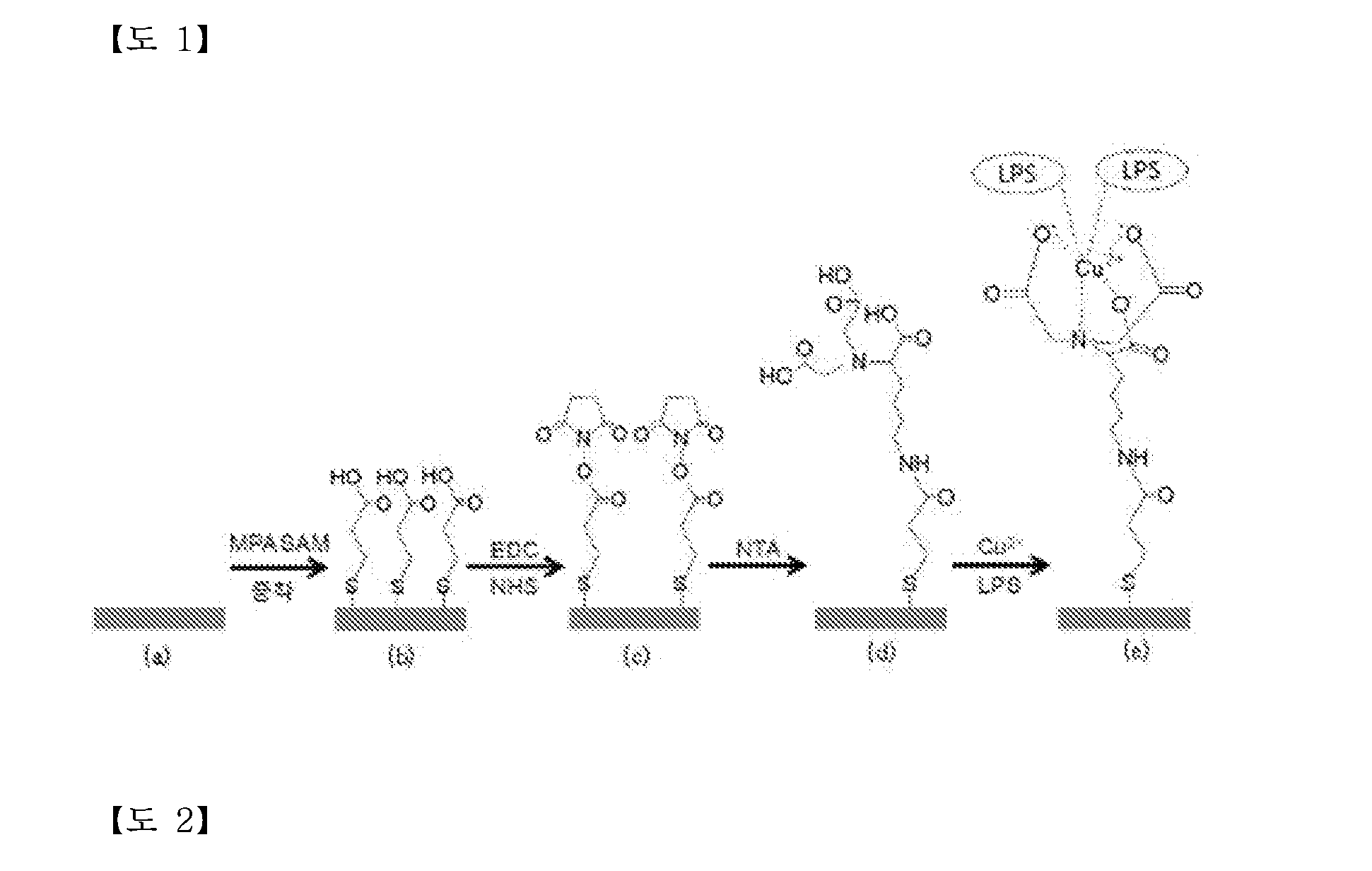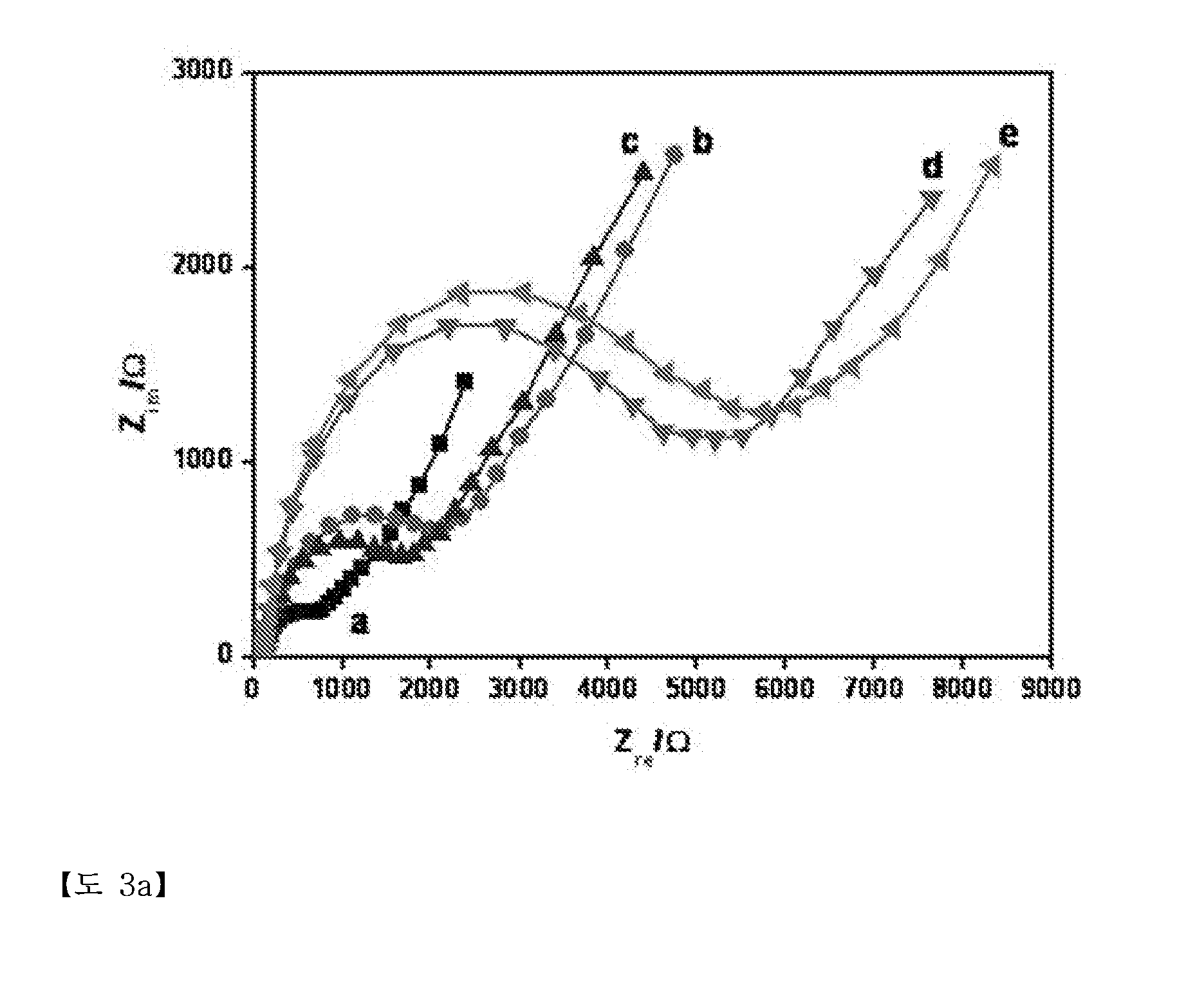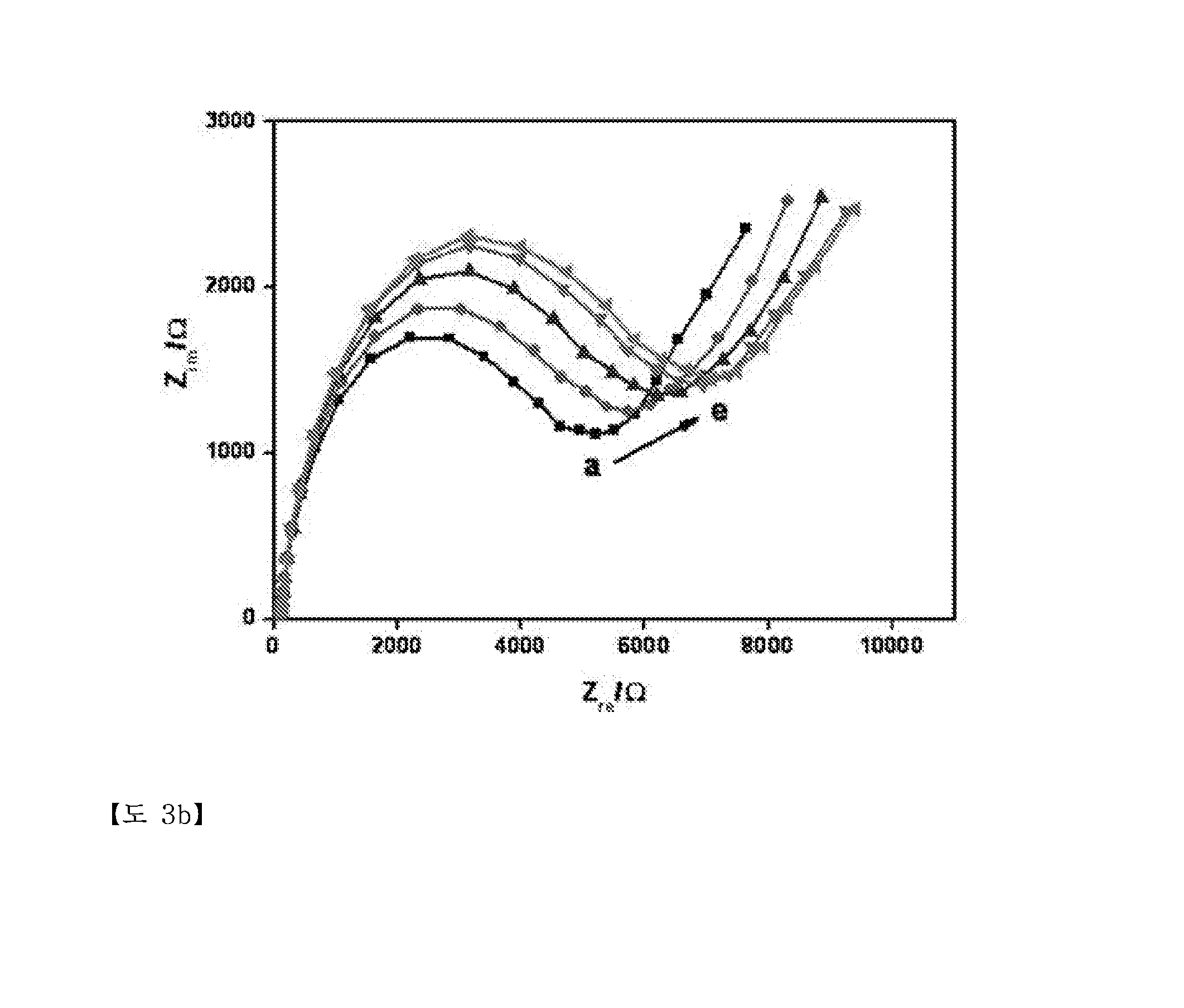Electrode for biosensor for lps detection, a method for producing it and a method for regenerating it
a biosensor and electrode technology, applied in the field of biosensor electrodes, can solve the problems of lps molecules that are non-toxic, become toxic, deformation of modified biomolecules, etc., and achieve high selectivity, high degree of regeneration, and high sensibility
- Summary
- Abstract
- Description
- Claims
- Application Information
AI Technical Summary
Benefits of technology
Problems solved by technology
Method used
Image
Examples
Embodiment Construction
[0041]Exemplary embodiments of the present invention will be described in detail below with reference to the accompanying drawings. While the present invention is shown and described in connection with exemplary embodiments thereof, it will be apparent to those skilled in the art that various reformations can be made without departing from the spirit and scope of the invention.
[0042]Materials and Apparatus
[0043]3-mercaptopropionic acid (MPA), 2-(N-morpholino)ethanesulfonic acid (MES), N-hydroxy-succinimide (NHS), 1-ethyl-3-(3-dimethylaminopropyl) carbodiimide hydrochloride (EDC), ethylenediaminetetraacetic acid (EDTA), N-(5-amino-1-carboxypentyl)iminodiacetic acid (NTA-C4—NH2), K3Fe(CN)6, K4Fe(CN)6, acetic acid (HAc), and sodium acetate (NaAc) were purchased from Sigma-aldrich and used without further purification.
[0044]Lipopolysaccharides (LPS) extracted from Escherichia coli 055:B5 (L4524) was purchased from Sigma-Aldrich, and stored at a temperature of −20° C. All solutions were ...
PUM
| Property | Measurement | Unit |
|---|---|---|
| temperature | aaaaa | aaaaa |
| frequency | aaaaa | aaaaa |
| electrochemical impedance spectroscopy | aaaaa | aaaaa |
Abstract
Description
Claims
Application Information
 Login to View More
Login to View More - R&D Engineer
- R&D Manager
- IP Professional
- Industry Leading Data Capabilities
- Powerful AI technology
- Patent DNA Extraction
Browse by: Latest US Patents, China's latest patents, Technical Efficacy Thesaurus, Application Domain, Technology Topic, Popular Technical Reports.
© 2024 PatSnap. All rights reserved.Legal|Privacy policy|Modern Slavery Act Transparency Statement|Sitemap|About US| Contact US: help@patsnap.com










